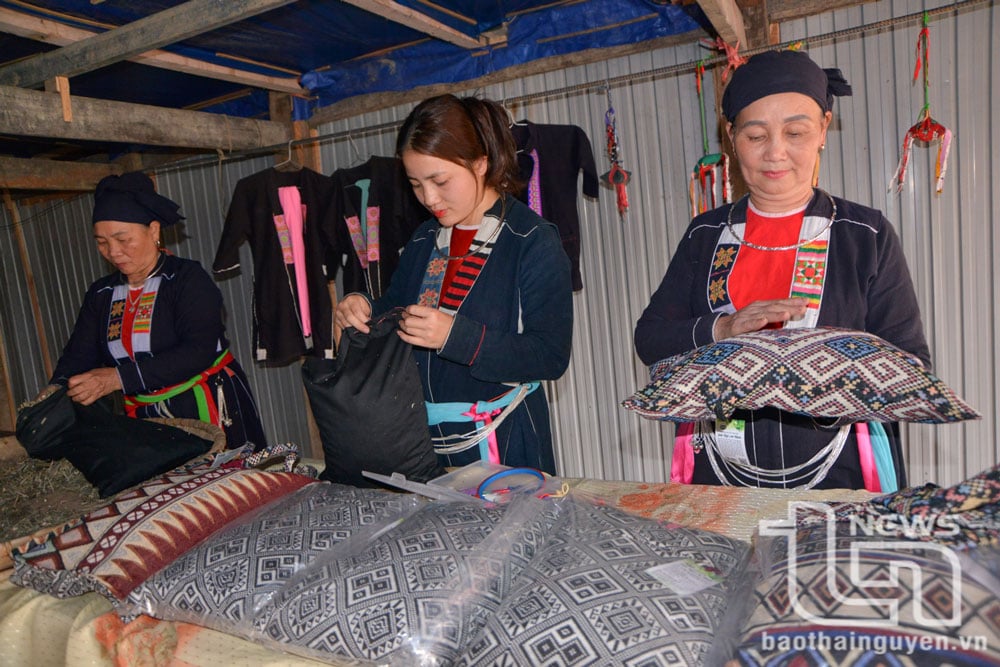According to the United Nations Population Fund (UNFPA), Vietnam is one of the countries with the fastest aging population in the world. People aged 60 and over accounted for nearly 12% of the total population in 2019 and by 2050, this figure will increase to more than 25%. By 2036, Vietnam will enter the aging population period, transitioning from an “aging” society to an “aged” society.

Student of Electrical Faculty, Hanoi College of Electromechanics. Photo: Hai Nguyen
Challenges of Vietnam's population In the world, the birth rate in most continents is continuously decreasing compared to the replacement rate in European countries, Korea, Japan, leading to a shortage of labor, problems of aging population and elderly care. It is predicted that labor shortage will be common worldwide after 2055, affecting unsustainable human development, a leading challenge for humanity in the 21st century. MSc. Mai Trung Son, Deputy Director of the Department of Population Size - Family Planning, Department of Population (Ministry of Health) said: In Vietnam, in recent times, many achievements have been made in population work, in which the population growth rate has been successfully controlled, reaching the replacement fertility rate since 2006 and continuing to be maintained until now, our country has entered the golden population structure period since 2007 and has just surpassed the 100 million population mark, creating opportunities for resource accumulation to increase investment in social security, health, education, and future employment. The stature and physical strength of Vietnamese people have improved. Average life expectancy has increased rapidly, from 65.5 years in 1993 to 74.5 years in 2023, higher than many countries with the same per capita income... Although Vietnam has achieved many achievements, there are still many difficulties and challenges that are directly affecting the life, society and sustainable development of Vietnam in the present and future. These include the risk of not achieving the goal of maintaining the replacement level of fertility nationwide, with a trend of low fertility; The rapid aging of the population and soon becoming an aging country; The sex ratio at birth is always high, leading to the risk of gender imbalance... Pressure from life, finances, not wanting to be tied down, and a non-traditional concept of marriage are the things that make many young women reluctant to get married. It is a fact that many young people are not interested in getting married. Although they know that settling down is only a matter of time, there are many reasons why these young people delay getting married. In addition, unlike those who want to get married but are still worried about economic problems or post-marital responsibilities, many young people tend to choose to be single because they like freedom. According to Prof. Dr. Nguyen Dinh Cu - former Director of the Institute of Population and Social Issues, National Economics University, the age of marriage among young people is also gradually increasing. From 1989 to 2022, the average age of first marriage for men increased from 24.4 to 29 years old. During the same period, the age of marriage for women increased from 23.2 to 24.1 years old. Meanwhile, the marriage rate has decreased significantly. Specifically, from 1989 to 2019, the rate of men aged 20 - 24 getting married decreased from 37.6% to 19.6%, which is nearly half. For women, these rates also decreased from 57.5% to 44.3%. Late marriage and low marriage rates are among the reasons for the birth rate to decrease by half over the past 30 years. "The more developed society is, the more diverse the needs of a child become, leading to material concerns when giving birth, wanting a stable economy before giving birth, the development of science and medicine has helped reduce the infant mortality rate significantly, so parents do not need to compensate for or reserve births... there are many reasons for the birth rate to decrease", Professor Nguyen Dinh Cu gave the reason. Improving the quality of human resources According to statistics from the General Statistics Office (Ministry of Planning and Investment), from 2009 to present, the birth rate has increased slightly, or decreased slightly around (2.1 children) and by 2023, according to the latest statistics, each Vietnamese woman will have 1.9 children, the lowest ever. Vietnam is facing certain difficulties, when the goal by 2030 is to maintain a stable replacement fertility rate of 2.1 children/woman, with a population size of about 104 million people. A prolonged low fertility rate will leave many consequences such as rapid population aging, labor shortage, and impacts on social security... Even in the forecast of Vietnam's population until 2069, in the low fertility scenario, Vietnam will face the risk of an average population growth rate of -0.04% in 2059. Meanwhile, in the average fertility scenario, 10 years later (2069), this number will only reach 0. Mr. Le Thanh Dung - Director of the Department of Population (Ministry of Health) said that the replacement fertility rate is the average fertility rate of a woman in her entire life who gives birth to enough children to perform her reproductive function and maintain (the race). The decline in fertility will affect the structure and size of the population, reduce the working-age population, and accelerate the aging process of the population... If there are no policy adjustments and timely solutions to bring the birth rate back to the replacement level, Vietnam's population will gradually decrease in the future..., slowing down the socio-economic development of the country. The aging process of the population in many countries and Vietnam is taking place very quickly, leading to many challenges regarding the decline and shortage of human resources in general and human resources in the public sector in particular. That requires State management agencies to have appropriate policies and solutions to overcome the current aging population in Vietnam. “When the population is in the period of “golden population” structure, the number of people of working age is large, so the human resources serving the economy are abundant, we even export labor. However, when entering the period of “aging population”, the number of elderly people increases, the number of people of working age decreases, raising the issue of human resource shortage for socio-economic development. The shortage of human resources when entering the period of aging population has occurred in many developed countries such as Germany, France, Japan, Korea... and is a lesson for developing countries like Vietnam. The shortage of human resources will create difficulties in socio-economic development, creating complex and long-term consequences. With the current rapid rate of population aging, it is necessary to have policies to deal with the problem of human resource shortage for national development”, Mr. Le Thanh Dung analyzed. The Ministry of Health is proposing a draft Population Law that does not specify the number of children but instead gives each couple the right to decide how many children to have. The draft law does not set out specific regulations on the number of children each couple can have. Instead, the draft law will give each family the right to decide, along with the responsibility to care for and raise their children well. According to the Ministry of Health, giving parents the right to decide how many children they have will help deal with the situation of a very low birth rate, leading to population aging and negative impacts on economic and social development, as well as ensuring national security. The Ministry of Health announced that the draft law aims to regulate birth rates and orient education on marriage and family for young people. Employers are responsible for creating conditions for employees to access information and use population services on family planning suitable to the working environment. In addition, some solutions to improve the quality of human resources in the current population aging process have also been proposed, such as perfecting the population policy, including maintaining a reasonable replacement fertility rate, extending the period of "golden population" structure, slowing down the population aging process, ensuring human resources for national development; developing population services, improving the quality of human resources in accordance with the population aging period; building and perfecting the social security system, ensuring the sustainable development of human resources; building a diverse employment policy and developing the labor market in accordance with the population aging period. Source: https://laodong.vn/gia-dinh-hon-nhan/nang-cao-chat-luong-nhan-luc-truoc-toc-do-gia-hoa-dan-so-1368393.ldo

![[Photo] Close-up of Vietnam's sniffer dog team searching for earthquake victims in Myanmar](https://vstatic.vietnam.vn/vietnam/resource/IMAGE/2025/4/1/d4949a0510ba40af93a15359b5450df2)

![[Photo] Prime Minister Pham Minh Chinh meets with King Philippe of Belgium](https://vstatic.vietnam.vn/vietnam/resource/IMAGE/2025/4/1/be2f9ad3b17843b9b8f8dee6f2d227e7)

![[Photo] President Luong Cuong and King Philippe of Belgium visit Thang Long Imperial Citadel](https://vstatic.vietnam.vn/vietnam/resource/IMAGE/2025/4/1/cb080a6652f84a1291edc3d2ee50f631)
![[Photo] General Secretary To Lam receives King Philippe of Belgium](https://vstatic.vietnam.vn/vietnam/resource/IMAGE/2025/4/1/e5963137a0c9428dabb93bdb34b86d7c)




![[Photo] Myanmar's capital in disarray after the great earthquake](https://vstatic.vietnam.vn/vietnam/resource/IMAGE/2025/4/1/7719e43b61ba40f3ac17f5c3c1f03720)






























































Comment (0)